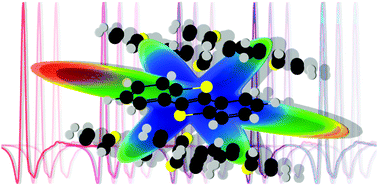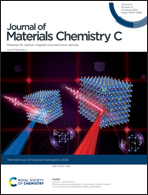Thermoelasticity in organic semiconductors determined with terahertz spectroscopy and quantum quasi-harmonic simulations†
Abstract
The thermomechanical response of organic semiconducting solids is an essential aspect to consider in the design of materials for advanced applications, and in particular, flexible electronics. The non-covalent intermolecular forces that exist in organic solids not only result in a diverse set of mechanical properties, but also a critical dependence of those same properties on temperature. However, studying the thermoelastic response of solids is experimentally challenging, often requiring large single-crystals and sensitive experimental apparatus. An alternative contactless approach involves using low-frequency vibrational spectroscopy to characterize the underlying intermolecular forces, and then combining this information with solid-state density functional theory simulations to retrieve the mechanical response of materials. This methodology, which only requires poly-micro-crystalline sample (compared to large single-crystals), leverages recent advances in the quasi-harmonic approximation to predict the temperature evolution of crystalline structures, dynamics, and associated forces, and then utilizes this information to determine the elastic tensor as a function of temperature. Here, this methodology is illustrated for two prototypical organic semiconducting crystals, rubrene and BTBT, and suggests a new alternative means to characterizing the thermoelastic response of organic materials.

- This article is part of the themed collection: Journal of Materials Chemistry C Emerging Investigators


 Please wait while we load your content...
Please wait while we load your content...